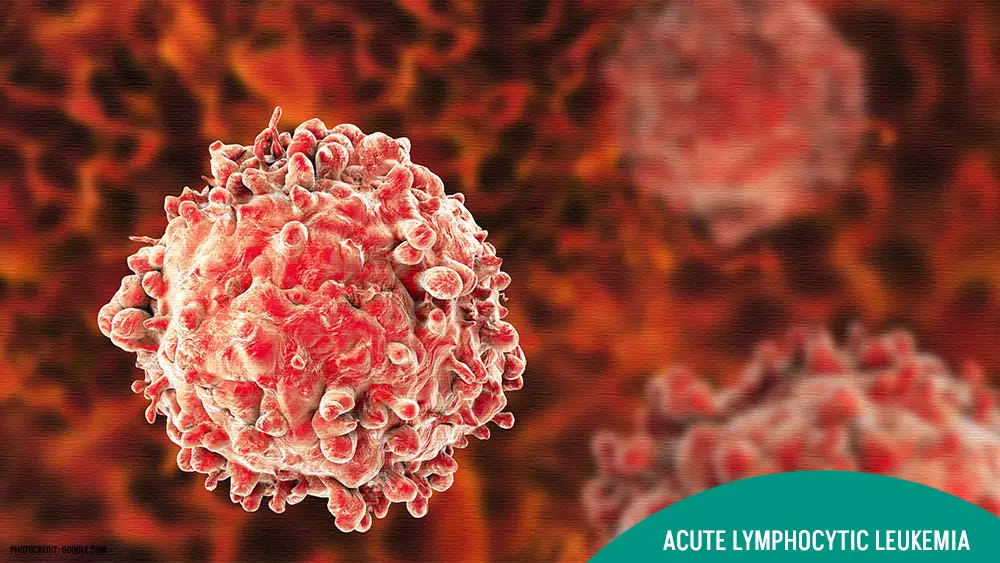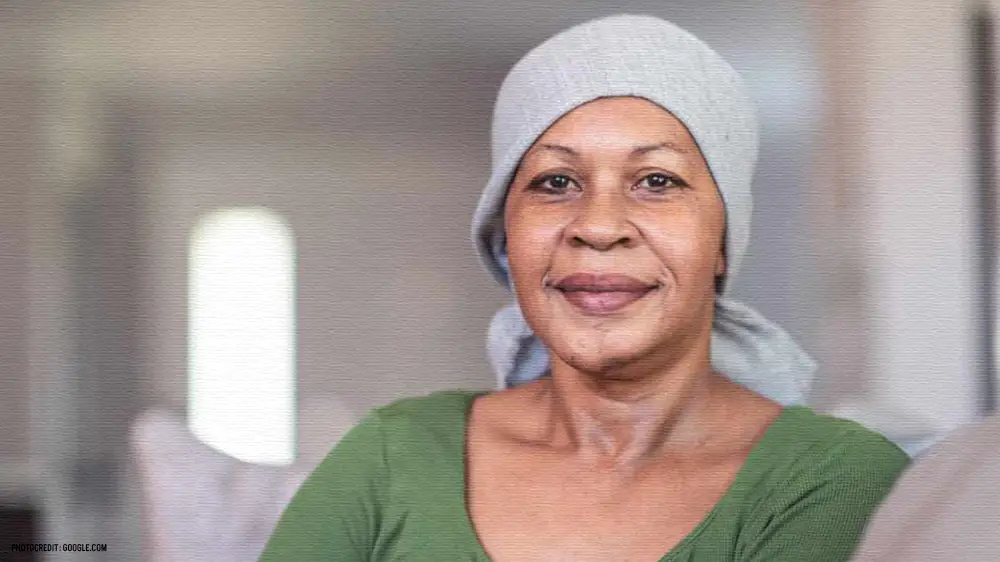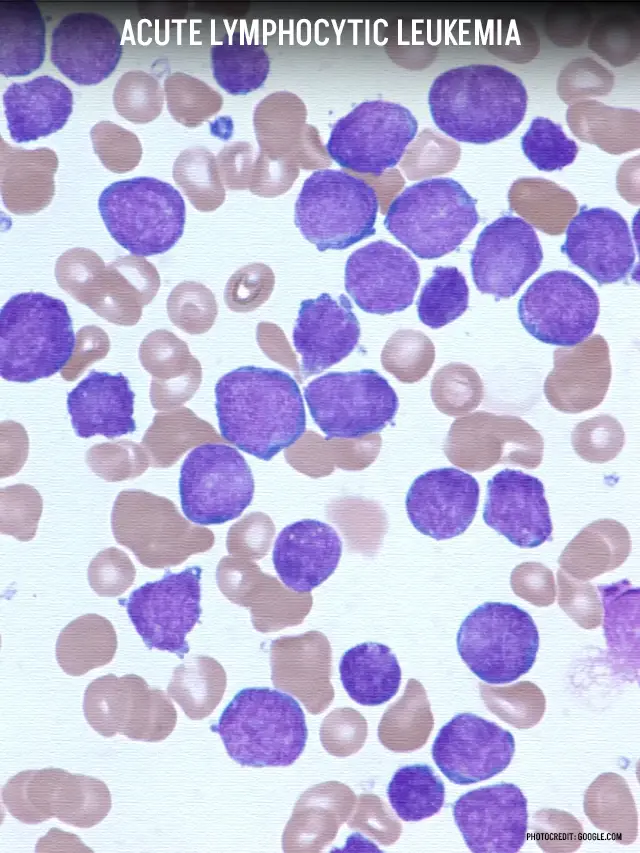
HEALTH BLOG
Acute Lymphocytic Leukemia Explained: Symptoms, Diagnosis, and Treatment Options
-
 Rahul Priydarss
Rahul Priydarss - February 19, 2024
Discover the latest breakthroughs in Acute Lymphocytic Leukemia (ALL) treatment, including CAR-T cell therapy and advanced risk stratification methods. Learn about the efficacy of asparaginase therapies and the tireless efforts of researchers like Dr. Asmaa Ferdjallah in shaping innovative strategies for combating ALL. Stay informed and empowered with insights into cutting-edge treatments, offering renewed hope for ALL patients. Explore the future of ALL treatment today.
What Is Leukemia:
Leukemia, a type of cancer affecting the blood and bone marrow, comes in various forms, each with its own characteristics and treatment approaches. Acute Lymphocytic Leukemia (ALL), although less common than some other types, is a critical condition that requires prompt attention and specialized care.

Table of Contents
What is Acute Lymphocytic Leukemia (ALL):
Acute Lymphocytic Leukemia, often referred to as ALL, is a type of cancer that affects the white blood cells, particularly lymphocytes, which are crucial for the immune system. This aggressive form of leukemia progresses rapidly and requires immediate medical intervention for effective management.
Understanding Leukemia:
What is leukemia?: Leukemia is a cancer of the blood and bone marrow characterized by the rapid production of abnormal white blood cells. These abnormal cells crowd out healthy blood cells, impairing the body’s ability to fight infections and control bleeding.
Types of leukemia: Leukemia is broadly categorized into four main types: Acute Lymphocytic Leukemia (ALL), Chronic Lymphocytic Leukemia (CLL), Acute Myeloid Leukemia (AML), and Chronic Myeloid Leukemia (CML). Each type has distinct characteristics based on the type of white blood cell affected and the rate of disease progression.
Overview of Acute Lymphocytic Leukemia:
Definition and classification:
Acute Lymphocytic Leukemia is characterized by the rapid proliferation of immature lymphocytes, known as lymphoblasts, in the bone marrow and blood. These abnormal cells interfere with the production of normal blood cells, leading to anemia, susceptibility to infections, and bleeding disorders.
Prevalence and demographics: ALL can occur at any age but is more commonly diagnosed in children, accounting for approximately 25% of all childhood cancers. However, it can also affect adults, albeit less frequently. The incidence of ALL varies among different ethnic and racial groups.
Causes and Risk Factors:
Genetic predisposition: Certain genetic mutations and chromosomal abnormalities increase the risk of developing ALL. Individuals with genetic syndromes such as Down syndrome or Li-Fraumeni syndrome have a higher predisposition to leukemia.
Environmental factors: Exposure to ionizing radiation, certain chemicals, and environmental toxins may increase the risk of developing ALL. However, the exact environmental triggers remain poorly understood.
Medical history and treatment: Previous cancer treatment, such as radiation therapy or chemotherapy, may increase the risk of developing secondary leukemia, including ALL. Additionally, certain autoimmune disorders and inherited immune deficiencies are associated with an increased risk of leukemia.

Symptoms of Acute Lymphocytic Leukemia:
Common signs and indicators: The symptoms of ALL can vary depending on the age of the patient and the stage of the disease. Common signs include fatigue, weakness, pale skin, fever, easy bruising or bleeding, frequent infections, swollen lymph nodes, and bone pain.
Manifestations in different age groups: Children with ALL may also experience abdominal pain, loss of appetite, weight loss, and enlarged liver or spleen. In contrast, adults may present with symptoms such as night sweats, headaches, confusion, and shortness of breath.
Diagnosis and Testing:
Blood tests and laboratory analysis: Diagnosis of ALL typically involves a series of blood tests to evaluate the number and function of blood cells. A complete blood count (CBC) may reveal abnormalities such as low red blood cell count (anemia), low platelet count (thrombocytopenia), and elevated white blood cell count (leukocytosis).
Imaging studies: Imaging tests such as X-rays, ultrasound, computed tomography (CT) scans, and magnetic resonance imaging (MRI) may be performed to assess the extent of disease spread and detect abnormalities in the organs and tissues.
Bone marrow biopsy: A bone marrow biopsy is a definitive diagnostic test for leukemia, allowing doctors to examine the bone marrow under a microscope to detect the presence of abnormal cells.
Treatment Options:
Chemotherapy: Chemotherapy is the mainstay of treatment for ALL and involves the use of powerful drugs to destroy cancer cells. Chemotherapy regimens may include multiple drugs administered in cycles over several months. Asparaginase is a chemotherapy drug. It is also known as Spectrila, Erwinase, and Oncaspar.
Radiation therapy: Radiation therapy may be used in combination with chemotherapy to target specific areas of the body affected by leukemia. It involves the use of high-energy X-rays or other forms of radiation to kill cancer cells.
Targeted therapy: Targeted therapy drugs are designed to specifically target cancer cells while minimizing damage to healthy cells. These drugs work by interfering with the signaling pathways that promote cancer cell growth and survival.
Stem cell transplantation: Stem cell transplantation, also known as bone marrow transplantation, may be recommended for patients with high-risk or relapsed ALL. This procedure involves replacing diseased bone marrow with healthy stem cells from a compatible donor.
Side Effects and Complications of Acute Lymphocytic Leukemia:
Nausea and vomiting: Nausea and vomiting are common side effects of chemotherapy and may be managed with anti-nausea medications and dietary modifications.
Hair loss: Chemotherapy-induced hair loss (alopecia) is temporary and reversible. Patients may choose to wear wigs, scarves, or hats during treatment.
Infections: Patients with leukemia are at increased risk of infections due to compromised immune function. Prophylactic antibiotics and vaccinations may help prevent infections.
Fatigue: Fatigue is a common symptom of leukemia and may persist even after treatment. Rest, proper nutrition, and gentle exercise can help alleviate fatigue.
Prognosis and Survival Rates:
Factors influencing prognosis: Several factors influence the prognosis of ALL, including age, overall health, response to treatment, and genetic abnormalities. Younger patients and those who achieve complete remission have a better prognosis.
Survival statistics: The overall survival rate for ALL has improved significantly over the years, particularly in children, with approximately 85% of children achieving long-term remission. However, the prognosis for adults with ALL remains less favorable, with lower survival rates.
Supportive Care and Coping Strategies for Acute Lymphocytic Leukemia:
Psychological support: Patients with leukemia may experience emotional distress, anxiety, and depression. Counseling, support groups, and psychotherapy can provide valuable emotional support and coping strategies.
Nutritional guidance: A balanced diet rich in fruits, vegetables, whole grains, and lean proteins is essential for supporting the immune system and promoting overall health during leukemia treatment.
Exercise and physical activity: Regular exercise, within the limits of individual tolerance, can help improve strength, stamina, and overall well-being during leukemia treatment. Gentle activities such as walking, yoga, and swimming may be beneficial.
Research and Advances in ALL Treatment:
Immunotherapy: Immunotherapy drugs, such as monoclonal antibodies and immune checkpoint inhibitors, are being investigated as potential treatments for ALL. These drugs work by harnessing the body’s immune system to target and destroy cancer cells.
CAR T-cell therapy: Chimeric antigen receptor (CAR) T-cell therapy is a promising new approach to treating ALL. This innovative therapy involves genetically modifying a patient’s T-cells to recognize and attack cancer cells. A groundbreaking advancement in leukemia treatment, CAR-T cell therapy, has garnered approval from the FDA, offering renewed hope for individuals grappling with relapsed or refractory disease.
This innovative approach involves harnessing the power of genetically modified T cells, which are collected from the patient and engineered in the laboratory to express chimeric antigen receptors (CARs). Once infused back into the body, these CAR-T cells possess the remarkable ability to target and eradicate specific cancer cells. Despite ongoing research into long-term toxicity, the reversible nature of associated side effects presents a promising avenue for patients navigating this challenging illness.
Novel drug developments: Ongoing research efforts are focused on developing new drugs and treatment strategies for ALL, including targeted therapies, immunomodulatory agents, and combination therapies.
FAQs Acute Lymphocytic Leukemia:
A1: While ALL can be cured in many cases, the prognosis depends on various factors such as age, overall health, and genetic abnormalities.
A2: Long-term side effects of ALL treatment may include infertility, secondary cancers, and organ damage.
A3: While most cases of leukemia are not inherited, certain genetic syndromes and family predispositions may increase the risk of developing leukemia.
A4: Providing emotional support, assisting with daily tasks, and accompanying them to medical appointments can be immensely helpful for a loved one with leukemia.
A5: While alternative treatments may complement conventional leukemia treatment, it’s essential to discuss them with a healthcare provider to ensure safety and effectiveness.

-Please remember, to always consult with healthcare professionals or Doctors for personalized advice related to medical conditions.
Conclusion:
Acute Lymphocytic Leukemia is a challenging and complex disease that requires comprehensive medical care and support. With advances in treatment and ongoing research efforts, there is hope for improved outcomes and better quality of life for patients with ALL. By raising awareness, promoting early detection, and advocating for continued research, we can work towards a future where leukemia is no longer a life-threatening condition.




